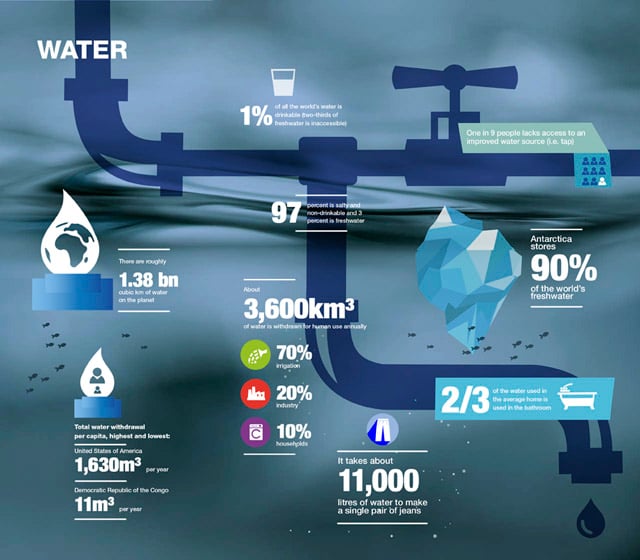Liquid engineering - how technology can help combat water scarcity
One in nine people worldwide lacks access to safe drinking water and rising demand is outpacing supply in some parts of the world. But smart new technologies can tackle the growing water crisis.
DATE 2023-11-28 AUTHOR GREG MCIVOR PHOTO GETTY & HANS VON CORSWANTThere is more than enough fresh water on the planet to meet everyone’s needs, but that water is not available in sufficient quantities where it is needed. As a result, water scarcity is on the greatest challenges the planet faces today.

Supplies of safe drinking water are dwindling, and population growth, urbanization and changing lifestyles will only make the problem worse. According to one study, by 2030 water supplies will satisfy only 60 percent of global demand, and less than 50 percent in many developing regions where water supply is already under stress.
There is no magic bullet, but technologies such as waterless toilets, ingenious water purification systems and water-efficient plants, could play a key role in ensuring that everyone gets access to the water they need.
FACTS - The water crisis in figures:
- There are roughly 1.38bn cubic metres of water on the planet
- Only 1% of all water on the planet is drinkable, and two-thirds of what is drinkable is inaccessible
- About 3,600km3 of water is withdrawn for human use annually. Of this, 70% goes to irrigation, 20% to industry and 10% is used by households
- About 880m people lack access to safe drinking water
- Bad water causes more than 2m deaths each year, most of them children
Downloads
Download the full story
FACTS
Things you may not know about water
- There is a reservoir of water in space that has 140 trillion times more water than the world's oceans, according to Nasa.
- Water itself does not conduct electricity well but the impurities in it do.
- Your probability of finding in any glass of water at least 1 molecule of water once drunk by Cleopatra is practically 100%.
- Water is light turquoise-blue due to weak absorption in the red part of the visible spectrum.
More about water
Alfa Laval offers a wide spectrum of solutions – from desalination and water supply systems to biological wastewater and sewage sludge treatment and systems for enhanced water efficiency and ballast water treatment, read more:
We’ve made enormous progress improving the water supply. But you’re always playing catch-up as you try to reach the last billion people on the planet.”
ADRIAN MCDONALD,
PROFESSOR OF GLOBAL WATER SECURITY, UNIVERSITY OF LEEDS
Increasingly, we are seeing a lot of innovation in terms of making water clean, available and potable. This is both on the recycling side – getting used water back into use in a way that is eco-friendly and quick – and also closing the gap by increasing supply, for instance through desalination and harvesting rainwater.”
ERIK HARVEY
SPECIALIST AT GLOBAL NON-PROFIT ORGANISATION WATERAID
